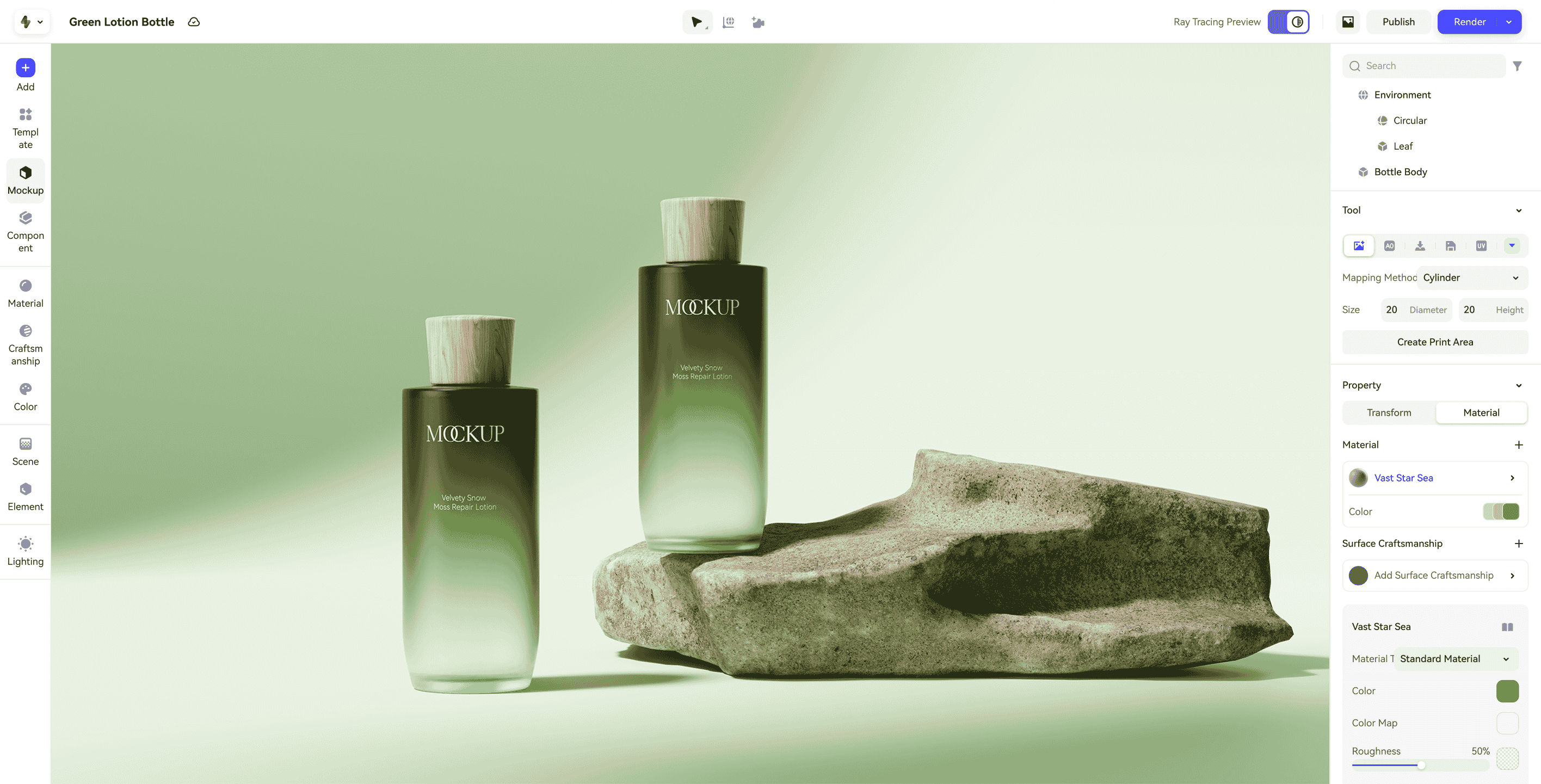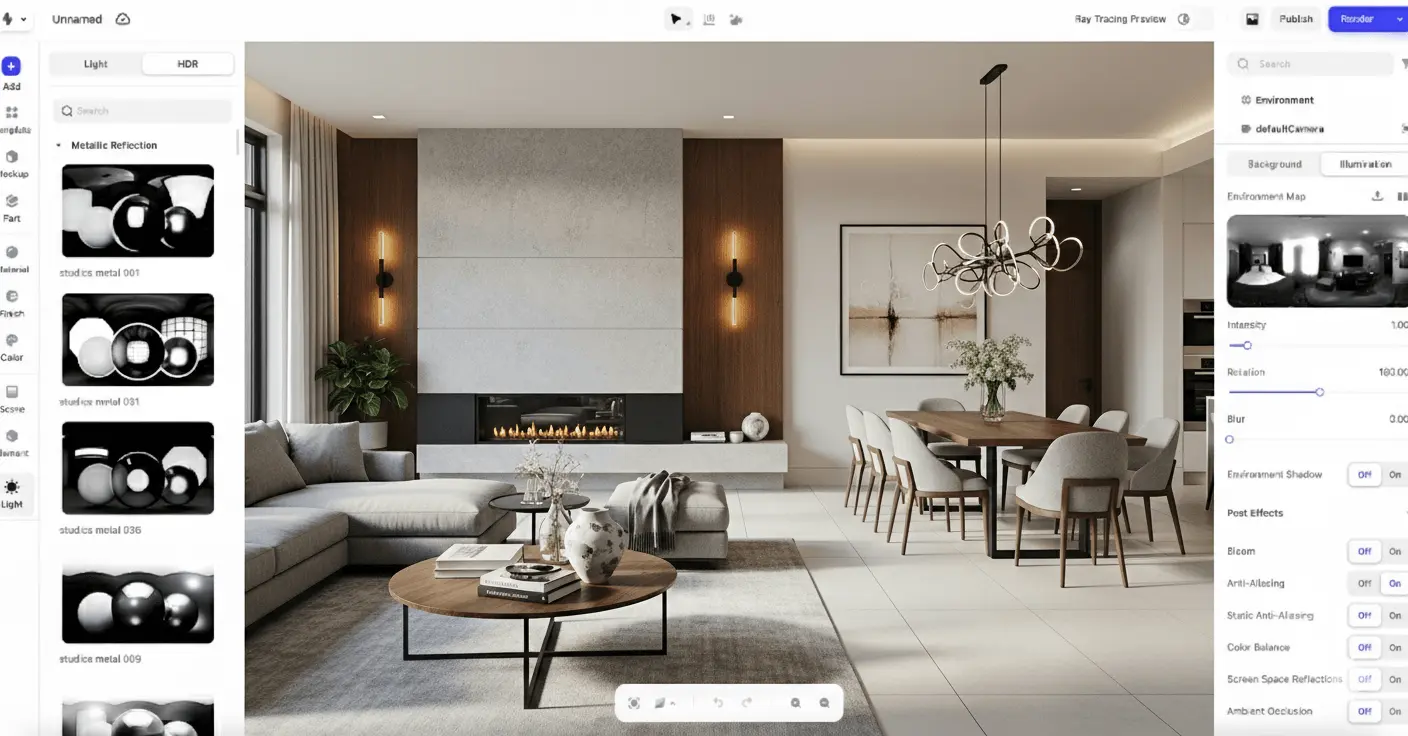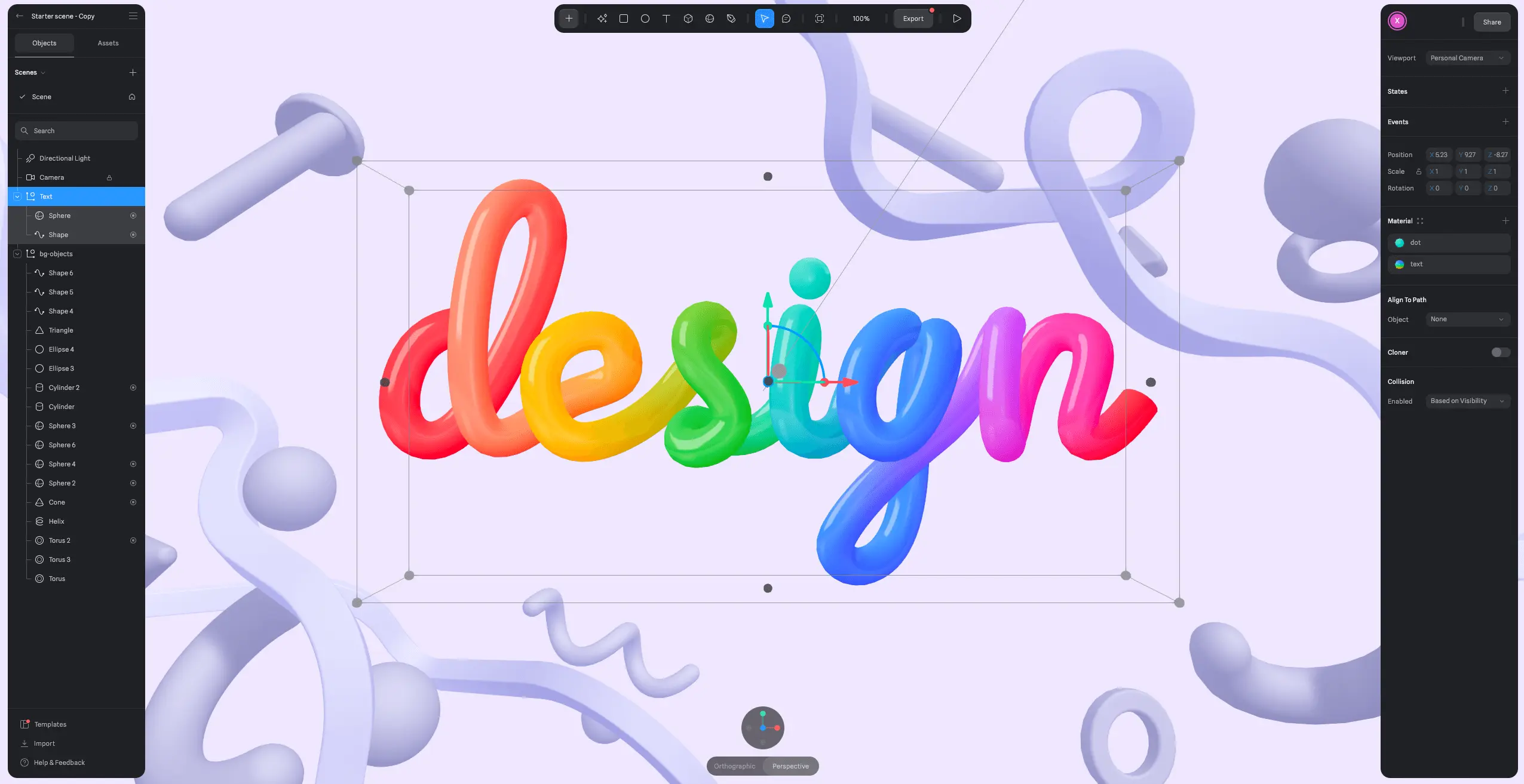Every 3D artist has a "Blender story." Mine involves a donut tutorial, three hours of my life I'll never get back, and the creeping, existential dread that maybe I just wasn't smart enough for 3D animation.
Let's be clear: Blender is a miracle. It is a free, open-source titan, a testament to what a passionate community can build. It can do anything and everything. It's the Mt. Everest of 3D software.
But here’s the hard question: what if you just need to get to the top of the hill? What if your goal is a beautiful view—a stunning photorealistic render—not the grueling, multi-year climb itself? For years, the answer was to buy expensive, specialized software. Today, a new wave of powerful, intuitive online alternatives has emerged. They offer the power you need, without the pain you've come to expect. This is your guide to the ascent.
Why an Online Alternative is the Smartest Move for Many Designers
Before we get to the tools, it's crucial to understand why this shift to the web isn't just a trend; it's a fundamental change in our workflow philosophy.
The End of the Hardware Arms Race
Blender is a beast that demands to be fed. To truly harness its power, especially the Cycles render engine, you need a powerful local GPU, a robust CPU, and plenty of RAM. Your machine becomes a dedicated rendering station. Online platforms liberate you from this. They perform the heavy lifting in the cloud, meaning you can create a stunning, ray-traced image on a lightweight MacBook Air. The hardware arms race is over, and you've just won by refusing to compete.
Design in Days, Not Months
The Blender learning curve is legendary. It is a deep, complex, and often unforgiving tool that rewards hundreds of hours of study. But what if you don't have hundreds of hours? Intuitive, user-focused online tools let you bypass the encyclopedic user manual and get straight to creating. The goal of these platforms is immediate productivity, letting you translate your vision into a finished product in a fraction of the time.
Moving from a Silo to a Studio
At its heart, Blender is a tool for the solo artist. Collaboration means packaging up .blend files, uploading them, and managing feedback through a chaotic mess of email and Slack messages. It's a digital silo. Modern online platforms are built on a simple, revolutionary premise: creativity is a team sport. They are designed for seamless, link-based collaboration, transforming a lonely, frustrating process into a fluid and interactive conversation.
The 5 Best Online Alternatives to Blender
Each of these platforms excels in a specific area where Blender's all-in-one approach can sometimes be a weakness.
1. Realishot: For Photorealistic Renders & a Collaborative Workflow
This is the intelligent professional's choice. Realishot is for the artist who needs the final render quality of Blender's Cycles engine but wants it in a fraction of the time and with zero setup friction. It is, simply put, the fastest and most efficient way to get from a raw 3D model to a breathtaking, studio-quality image.
It achieves this by being hyper-focused. It's not trying to be a modeler or a VFX suite. It is built to do one thing with world-class excellence: create stunning, photorealistic renders in a seamless, collaborative environment.
 Realishot's clean, intuitive, and powerful online rendering interface
Realishot's clean, intuitive, and powerful online rendering interface
 My Experience: The first time I used Realishot, it felt like a revelation. A task that would take me an hour in Blender—importing a model, setting up a three-point lighting rig, finding an HDRI, creating materials from scratch, and tweaking a dozen render settings—took me less than five minutes in Realishot. I chose a lighting preset, dragged on a physically-based material from the library, and its AI-assistant automatically dialed in the realism. It was the same beautiful result, just without the frustration.
My Experience: The first time I used Realishot, it felt like a revelation. A task that would take me an hour in Blender—importing a model, setting up a three-point lighting rig, finding an HDRI, creating materials from scratch, and tweaking a dozen render settings—took me less than five minutes in Realishot. I chose a lighting preset, dragged on a physically-based material from the library, and its AI-assistant automatically dialed in the realism. It was the same beautiful result, just without the frustration. What Makes It Different:
What Makes It Different: Intuitive Photorealism: It completely replaces Blender's complex node-based material editor with an intuitive library of PBR materials and professional lighting templates. You work like a photographer, not a programmer.
Intuitive Photorealism: It completely replaces Blender's complex node-based material editor with an intuitive library of PBR materials and professional lighting templates. You work like a photographer, not a programmer. True Collaboration: This is its superpower. Instead of sending a static render for feedback, you send a single web link. Your client or art director can orbit the full 3D model in their browser and leave annotated notes. It transforms a clunky, asynchronous process into a dynamic, real-time conversation.
True Collaboration: This is its superpower. Instead of sending a static render for feedback, you send a single web link. Your client or art director can orbit the full 3D model in their browser and leave annotated notes. It transforms a clunky, asynchronous process into a dynamic, real-time conversation. Accessible Power: It’s this focus on intuitive results that makes it a top contender in our guide to the easiest 3D rendering software. It's a powerful offering that we also covered in our main guide to 3D rendering software.
Accessible Power: It’s this focus on intuitive results that makes it a top contender in our guide to the easiest 3D rendering software. It's a powerful offering that we also covered in our main guide to 3D rendering software.
 A stunning interior scene rendered in Realishot, showcasing its lighting and material quality
A stunning interior scene rendered in Realishot, showcasing its lighting and material quality
2. Vectary: For 3D Modeling & AR Experiences
Where Realishot is a specialized photo studio, Vectary is more like a general creative suite for the web. This is the best choice for those who are drawn to Blender for its modeling capabilities and want to perform that creative work directly in a browser.
-uk74gq.webp) The collaborative online 3D design and rendering interface of Vectary
The collaborative online 3D design and rendering interface of Vectary
 My Experience: Vectary is a fantastic all-in-one tool for creating 3D assets for a website or a quick AR prototype. Its modeling toolset is impressively robust for a browser-based application, and the real-time collaboration on a single model is a standout feature for teams.
My Experience: Vectary is a fantastic all-in-one tool for creating 3D assets for a website or a quick AR prototype. Its modeling toolset is impressively robust for a browser-based application, and the real-time collaboration on a single model is a standout feature for teams. What Makes It Different: The integration of a capable modeling toolset with rendering and AR export makes it a true start-to-finish platform for web content.
What Makes It Different: The integration of a capable modeling toolset with rendering and AR export makes it a true start-to-finish platform for web content. Strategic Limitation: Its rendering quality, while good, is not on the same level of dedicated photorealistic engines like Realishot or Blender's Cycles. It's a generalist tool built for speed and web-readiness.
Strategic Limitation: Its rendering quality, while good, is not on the same level of dedicated photorealistic engines like Realishot or Blender's Cycles. It's a generalist tool built for speed and web-readiness.
3. Spline: For Interactive 3D on the Web
If you're drawn to Blender for its animation tools and interactivity, Spline is a hyper-focused, web-native alternative that is both more intuitive and better optimized for the web. It's less a renderer and more an interactive design tool.
 Spline's clean interface for creating interactive 3D web experiences
Spline's clean interface for creating interactive 3D web experiences
 My Experience: Spline is fun, playful, and incredibly powerful for what it does. Creating a 3D web animation that reacts to a user's mouse scroll or a button click feels incredibly intuitive, a task that would require complex scripting or drivers in Blender.
My Experience: Spline is fun, playful, and incredibly powerful for what it does. Creating a 3D web animation that reacts to a user's mouse scroll or a button click feels incredibly intuitive, a task that would require complex scripting or drivers in Blender. What Makes It Different: Its powerful event and state machine for building true interactivity (not just canned animation) directly into 3D scenes.
What Makes It Different: Its powerful event and state machine for building true interactivity (not just canned animation) directly into 3D scenes. Strategic Limitation: It is a highly specialized tool for web-based interactive experiences, not a general-purpose renderer for producing static, photorealistic marketing images.
Strategic Limitation: It is a highly specialized tool for web-based interactive experiences, not a general-purpose renderer for producing static, photorealistic marketing images.
4. SketchUp for Web: For Architectural & Conceptual Modeling
For architects, product designers, or anyone who uses Blender for hard-surface conceptual modeling, SketchUp is often a faster, more intuitive, and more liberating tool for getting those initial ideas out of your head and into 3D.
-r4unx4.webp) The simple and intuitive modeling interface of SketchUp Free for Web
The simple and intuitive modeling interface of SketchUp Free for Web
 My Experience: I often "think" in SketchUp. Its push-pull modeling is so fluid and natural that I can work out complex spatial ideas without ever getting bogged down by the technical complexity inherent in Blender's poly-modeling workflow.
My Experience: I often "think" in SketchUp. Its push-pull modeling is so fluid and natural that I can work out complex spatial ideas without ever getting bogged down by the technical complexity inherent in Blender's poly-modeling workflow. What Makes It Different: Its legendary, unmatched ease of use for architectural and conceptual modeling.
What Makes It Different: Its legendary, unmatched ease of use for architectural and conceptual modeling. Strategic Limitation: It is purely a modeler, not a renderer. Its native visualization is extremely basic. The professional workflow is to model in SketchUp and then bring that model into a dedicated rendering platform like Realishot for the final, beautiful finish.
Strategic Limitation: It is purely a modeler, not a renderer. Its native visualization is extremely basic. The professional workflow is to model in SketchUp and then bring that model into a dedicated rendering platform like Realishot for the final, beautiful finish.
5. Clara.io: For Traditional Modeling in a Browser
For those who want something that feels the most like a traditional desktop 3D application (like an older version of Blender or 3ds Max), but in a browser, there is Clara.io. It is one of the most comprehensive and feature-rich browser-based modeling tools available.
 My Experience: Clara.io is impressively powerful, with a feature set that includes polygon modeling, sculpting, and keyframe animation. It has a depth that other online tools often lack.
My Experience: Clara.io is impressively powerful, with a feature set that includes polygon modeling, sculpting, and keyframe animation. It has a depth that other online tools often lack. What Makes It Different: Its commitment to providing a full, traditional DCC feature set in a browser.
What Makes It Different: Its commitment to providing a full, traditional DCC feature set in a browser. Strategic Limitation: With that power comes complexity. Its interface can feel dated and less intuitive compared to the more modern, streamlined UI of tools like Vectary or Spline. Its rendering is capable but is not its primary focus.
Strategic Limitation: With that power comes complexity. Its interface can feel dated and less intuitive compared to the more modern, streamlined UI of tools like Vectary or Spline. Its rendering is capable but is not its primary focus.
At a Glance: Which Online Blender Alternative is Your Fit?
| Platform | Main Strength (vs. Blender) | Best For... | Learning Curve | Collaboration |
|---|---|---|---|---|
| Realishot | Effortless Photorealism & Workflow | Product Viz & Marketing Teams | Lowest | Excellent |
| Vectary | All-in-One Web Creation | Modeling & AR Experiences | Low | Excellent |
| Spline | Web Interactivity & Animation | Interactive Web Designers/Devs | Medium | Excellent |
| SketchUp | Intuitive Conceptual Modeling | Architects & Concept Artists | Lowest | Good |
| Clara.io | Traditional Feature Depth | Technical 3D Generalists | High | Fair |
Conclusion: Augmenting Power with Efficiency
Blender remains a titan in the 3D world, a staggering testament to the power of open-source creation. For the dedicated artist willing to invest the immense time required to master its depths, it is and will continue to be an unparalleled, all-in-one solution.
But in a professional setting, the goal isn't just about having the most powerful tool; it's about building the most efficient workflow. The smartest designers I know don't limit themselves to a single dogma. They build an intelligent toolkit.
This is the modern approach: use Blender’s incredible modeling suite for what it does best—crafting complex, custom forms. Then, for the critical last mile of creating stunning photorealistic images and collaborating with clients, pivot to a specialized tool like Realishot. It’s not a matter of replacing Blender's power, but augmenting it with a smarter, faster, and more collaborative process for the part of the job that truly drives your business forward.
